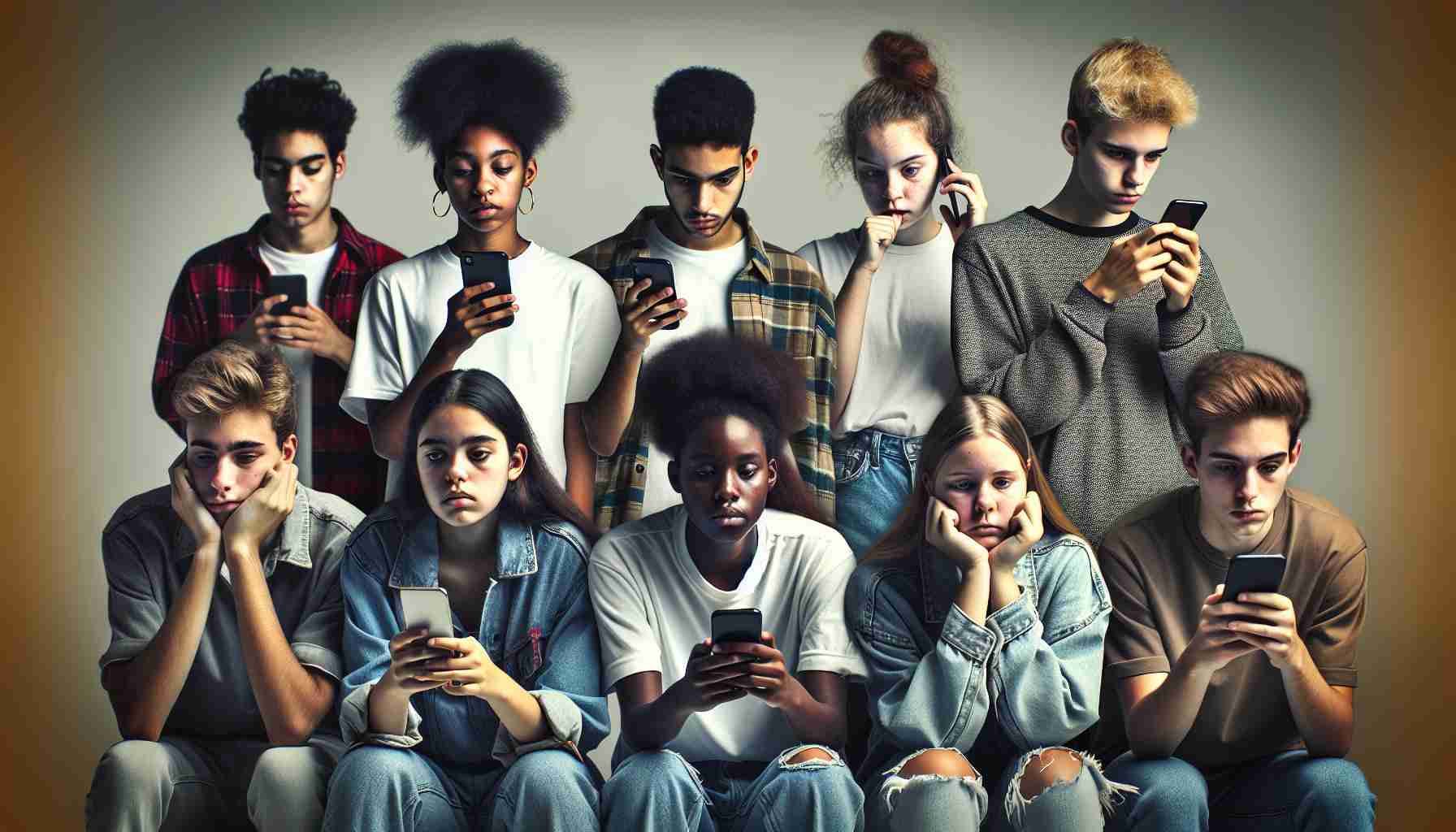The Offspring forewarned us with their 1998 hit “The Kids Aren’t Alright,” hinting at the challenges faced by youth. Decades later, the tables have turned, and one of the primary culprits affecting adolescent well-being is the mobile phone.
Jonathan Haidt, a social psychologist, discusses the mental health crisis triggered by excessive mobile phone usage in his book “The Anxious Generation.” He makes a compelling call to action, addressing the urgency of the situation.
Mobiles have sparked a mental health epidemic, an unseen danger that lurked within the allure of the latest smartphones handed to eager teenagers a decade ago. Evidence is mounting that youths growing up with smartphones are increasingly suffering.
Dr. Hugh Breakey, Senior Research Fellow at Griffith University’s Institute for Ethics, Governance and Law, breaks down the situation in an article for The Conversation.
From the Real to the Digital World
Haidt combines research from various sources to highlight an epidemic of mental health issues and the role of smartphones, covering everything from self-inflicted harm to clinical disorders requiring hospital care for mental health. Despite focusing on the USA, he notes similar shifts in youthful mental health across other Western nations such as Australia.
His data consistently indicates a spike in mental health disorders and concerns for teen welfare since 2010, particularly among girls. In the USA, mental health issues that formerly affected about 5-10% of adolescents have risen to about double that rate.
The year 2010 marked the confluence of mobile phones, the rise of social media, fast internet, and free apps—a “toxic” technological mix that began to dominate children’s lives for an average of up to seven hours daily. As a result, the time for physical play, meaningful conversations, and sleep has decreased. In contrast, attention fragmentation and addiction have risen due to social media platforms designed to challenge their psychological vulnerabilities.
Teen experiences and dynamics—social connection, play, and relationships—have shifted from the physical world to the digital realm. While technology provides a sense of connection and a temporary dopamine hit, it lacks the challenges and connections of the real world, thus increasing loneliness and isolation in the long term.
Time to Act
Haidt argues that not only are mobile phones addictive, but peer pressure exacerbates the problem, with those lacking a mobile more likely to end up isolated and marginalized. He suggests four strategies for change driven by collective parental action along with legislative and regulatory reforms:
Engagement in more independent activities, free play, and responsibility in the real world. As utopian as they may sound, Haidt’s reforms may signify a first step in a profound battle between the need for real-world experience and connection and the overwhelming temptations of a digital realm that we find irresistible.
Increasing Awareness of Mental Health Issues in Teens
Over the last few decades, awareness has significantly increased regarding the prevalence of mental health issues among adolescents. This enhanced focus is partly driven by rising rates of depression, anxiety, and self-harm seen in emergency room data and mental health surveys.
Impact of Social Media on Teen Mental Health
Despite the benefits of connectivity, social media is often implicated in the exacerbation of mental health issues among teens. The constant comparison with others, cyberbullying, and other negative interactions online have potential to seriously harm a young person’s self-esteem and overall mental health. For example, studies have shown a link between high social media use and depression, especially in teenage girls.
Key Challenges and Controversies
One major challenge is to establish causation versus correlation: to determine whether mobile phone and social media use contribute to mental health declines or if adolescents with mental health issues are more likely to spend time on their devices. This is complicated by varying individual experiences and the multifaceted nature of mental health.
A controversial aspect of this topic is the debate over regulation of social media platforms, especially regarding the protection of young users. Moreover, there is ongoing discussion on how much responsibility lies with parents, schools, tech companies, and the teens themselves.
Advantages and Disadvantages of Mobile Phone Usage
Advantages:
– Connectivity and access to information
– Opportunities for education and learning
– Ability to maintain relationships over long distances
Disadvantages:
– Potential for addiction
– Disruption of sleep due to blue light exposure and constant notifications
– Risk of cyberbullying and exposure to harmful content
– Replacement of face-to-face interactions with digital communications, which may impact the development of social skills
Related Links
For more information on mental health and the impact of technology, you may visit:
– World Health Organization (WHO)
– American Psychological Association (APA)
– National Institute of Mental Health (NIMH)
These organizations offer a wealth of data and resources on the effects of technology on mental health, particularly in adolescents. They provide guidelines and strategies for parents, educators, and policymakers to help mitigate the mental health risks associated with mobile phone usage.
Conclusion
In summary, Jonathan Haidt shines a light on a deeply concerning trend among today’s youth. The issues at stake—ranging from mental health challenges to the changing nature of adolescent experiences—demand a nuanced response that balances the benefits of technological advances with measures to protect and promote teen well-being. As society grapples with this modern dilemma, the conversation must continue to evolve, prioritizing the health and development of the next generation.
The source of the article is from the blog oinegro.com.br
